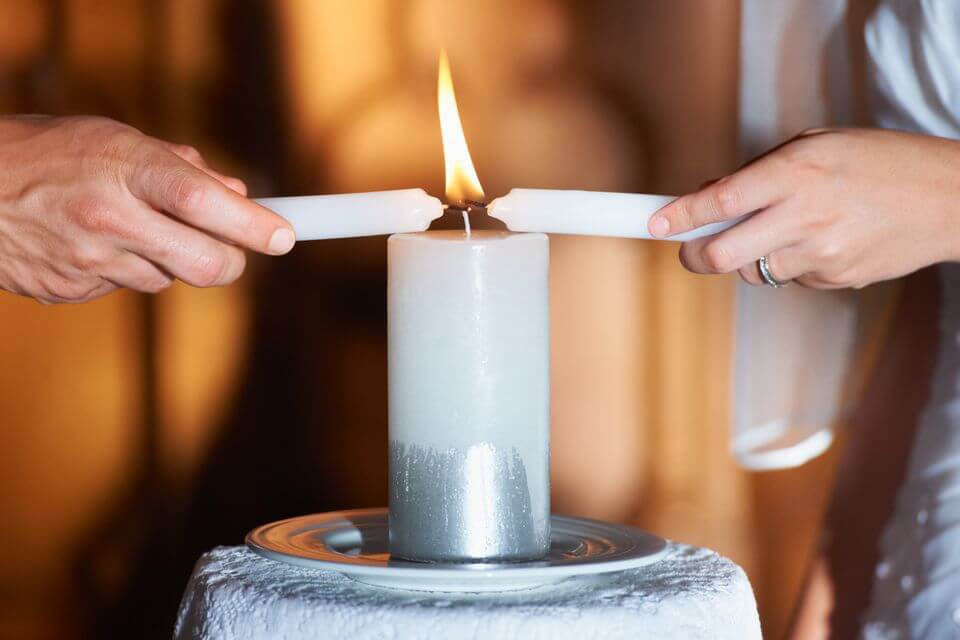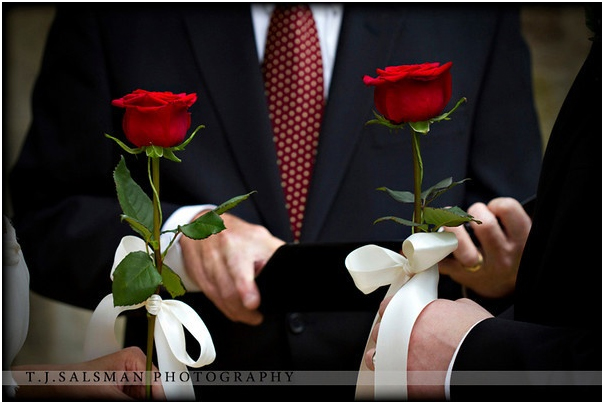Best Wedding Rituals

Over the years I have enjoyed performing a wide range of wedding ceremonial rituals…here are my top ten! And if there isn’t one here that suits you, I will create one especially for you.

Stone Warming Ceremony
Have black and white stones (or any stones you like) placed on the chairs and ask the guests to hold them during the ceremony, warming them with their love, good thoughts and best wishes. Once the ceremony is finished, guests are asked to write their name on one side and one word on the other and place them in a bowl. You can look at one every day for a lovely reminder.

Unity Candle Lighting Ceremony
This ceremony stems from ancient religious customs, but is quite common as a symbolic act of blending and binding. Whilst this ceremony can take many forms, it’s common that the bride and groom light individual small candles and together light a larger centre candle as a symbolic act of their union. Please Note: This ceremony is difficult to perform at outdoor venues.

Ring Warming Ceremony
The wedding rings are placed in a little bag or tied together with a ribbon and passed around the guests. Each person makes a wish on the rings for the couple (ideal for small weddings) before they are placed on the couples fingers. This ritual is especially touching if the bride and groom have young children from a previous relationship – it involves them in the ceremony and asks for their blessing. Please Note: More than 50 guests and this ritual can be difficult to complete.

Rose/Flower Ceremony
This ritual can take many forms. The bride and groom can give each other a flower as their first gift as ‘husband’ and ‘wife’. It can be a promise that whenever they argue through their marriage they will always present each other with a flower to say sorry. Alternatively the bride and groom can present their mothers will a flower as a token of their thanks and love. In fact, a flower can be given to anyone at the ceremony!

Sand Ceremony
This ceremony originated with the bride and groom each taking a handful of sand and flinging it in the air where it became one and inseparable. Nowadays the bride and groom, sometimes with family members, pour sand from individual glasses into a larger centre glass as a symbolic act of the blending of their lives and families. Meaningful objects can be placed in the sand too. As the grains of sand will never be able to be separated, the couple are bonded for life.

Lover’s Knot or Hand-Fasting Ceremony
This is one of my personal favourites and I have developed a couple of lovely options. During this ceremony the bride and groom’s hands are tied with one sash or several ribbons, usually when they say their vows. The knot is fastened – the origins of ‘tying the knot’ – after which the ribbon is removed from their hands and placed in a keepsake box. Like their love, the knot will stay tied forever. More about handfasting

Wine Sharing Ceremony
Wine sharing has origins in many religious and European traditions, but can really be done by any couple! The bride and groom drink wine from the same cup and agree to share all the sweetness and bitterness that their marriage brings.

Time Capsule or Wine and Love Letter Box
This is another of my personal favourites that you can be very creative with. The couple can ask guests to bring something on the day to place in a locked box or time capsule. It can be opened on any anniversary (1st, 5th, 10th etc…) Many include a bottle of champagne or wine and love-letters to each other but other nice ideas are photos, wish notes from guests, letters and newspaper clippings from that day.

Adding Flowers to the Bouquet
As the bride is walking down the aisle she collects flowers from guests and places them in her bouquet. This is a lovely way to include several special people. The flowers can represent the support from family and friends.

Honouring Deceased Loved Ones
It can be quite touching for the bride and groom and their families if any deceased loved ones are acknowledged in a special way during the ceremony. This can be done, for example, through lighting a candle, flowers or having a photo of the deceased on the signing table or on an empty chair.

And here’s an extra one:
The Wish Knot
Ask me about it 🙂



